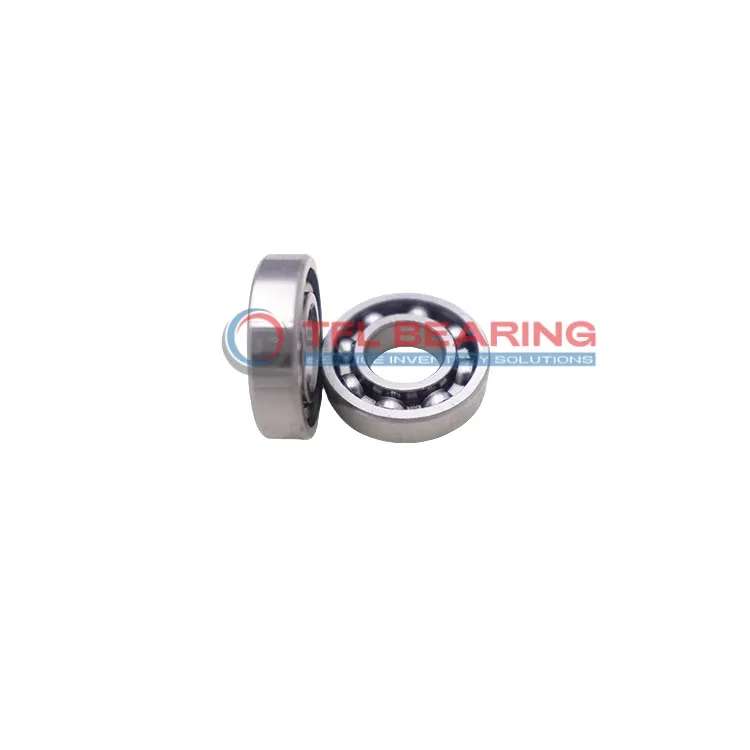
The 210 is a single-row deep groove ball bearing with a 50mm bore and 90mm outer diameter, crafted from sturdy chrome steel. It manages radial loads up to 8790 lbf and operates smoothly at speeds up to 8000 RPM.
Its open design with filling slots allows for easy lubrication, while the nylon cage reduces friction and noise. The bearing performs reliably in temperatures ranging from -30°C to 120°C.
This model is interchangeable with SKF bearings, offering a practical replacement option. It’s well-suited for applications like electric motors or pumps where radial loads are common.
Weighing 0.5kg, it’s a robust yet manageable choice for industrial use. Compliant with RoHS and REACH standards, ensuring safety and environmental compliance.
"*" indicates required fields
Why Choose 210 Bearing for Precision Tasks?
210 Bearing features a deep groove design with filling slots, enhancing its radial load capacity for precision applications.
The chrome steel rings and balls provide durability, while the nylon cage ensures smooth operation at high speeds.
With a dynamic radial load of 8790 lbf, it handles demanding tasks efficiently.
Its temperature range of -30° to 120°C makes it suitable for various operating conditions.
How Does 210 Bearing Reduce Friction?
210 Bearing’s deep groove design and chrome steel components minimise friction during operation.
The nylon cage helps maintain ball alignment, reducing wear and ensuring consistent performance.
It supports speeds up to 8,000 rpm, making it ideal for high-speed applications.
The open seal type allows for easy lubrication, further enhancing its efficiency.
Built for Reliability: 210 Bearing
210 Bearing is constructed with chrome steel rings and balls, offering strong resistance to wear.
Its single-row design with filling slots ensures reliable radial load handling up to 8790 lbf.
The P0 tolerance class guarantees precise performance in various applications.
Operating between -30° and 120°C, it remains dependable in diverse environments.
Steel vs Ceramic Bearings: Strengths of 210 Bearing
210 Bearing uses chrome steel for both rings and balls, providing excellent durability and load capacity.
Compared to ceramic options, it offers a cost-effective solution without compromising performance.
The nylon cage reduces noise and vibration, enhancing operational smoothness.
With a static radial load of 7756 lbf, it ensures stability in demanding conditions.
Engineered for Precision: 210 Bearing
210 Bearing’s deep groove design and precise tolerances ensure accurate performance in radial applications.
The chrome steel construction resists wear, while the nylon cage reduces friction and noise.
It supports speeds up to 8,000 rpm, making it suitable for high-speed machinery.
Its wide temperature range allows for reliable use in various industrial settings.
Industrial Uses of 210 Bearing
The 210 Bearing is commonly used in industrial machinery like pumps and electric motors, where its deep groove design handles radial loads efficiently.
Its open construction allows for easy lubrication, making it suitable for environments requiring regular maintenance.
Where Is 210 Bearing Used?
You’ll often find the 210 Bearing in automotive applications such as alternators and wheel hubs, thanks to its reliable performance under radial stress.
The nylon cage reduces friction, ensuring smooth operation even at higher speeds.
Perfect Fit for Automation: 210 Bearing
In robotics and automated systems, the 210 Bearing supports precise movements in components like conveyor belts and assembly arms.
Its chrome steel construction offers durability, making it a dependable choice for continuous operation.
Medical vs Industrial: Where 210 Bearing Excels
While the 210 Bearing performs well in industrial gearboxes, it’s also found in medical devices like centrifuges due to its balanced load capacity.
The metric sizing ensures compatibility with a wide range of equipment across different sectors.
Consumer Electronics and the 210 Bearing
For household appliances like washing machines, the 210 Bearing provides quiet and efficient performance.
Its temperature range makes it adaptable to both everyday use and more demanding conditions.
"*" indicates required fields